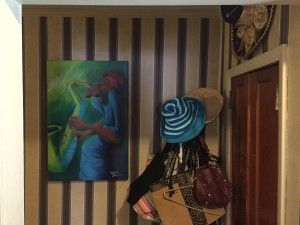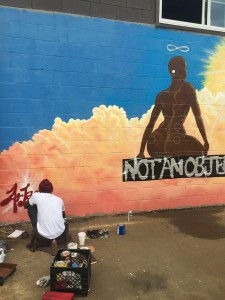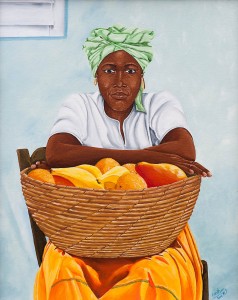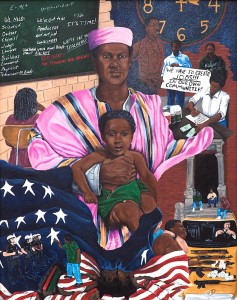NASHVILLE, Tenn. (TSU News Service) – When the Nashville Predators entered Bridgestone Arena this week to observe Black History Month, the NHL team wore a jersey designed by a Tennessee State University professor. Kaleena Sales, department chair and associate professor of art and design, revealed her design at the Predators Black History Celebration game on Wednesday, Jan. 31. Sales says the design offers a duality that bridges historical and contemporary Black culture.
I’m excited and honored to have the opportunity to represent TSU and Nashville as a Black designer,” Sales said.
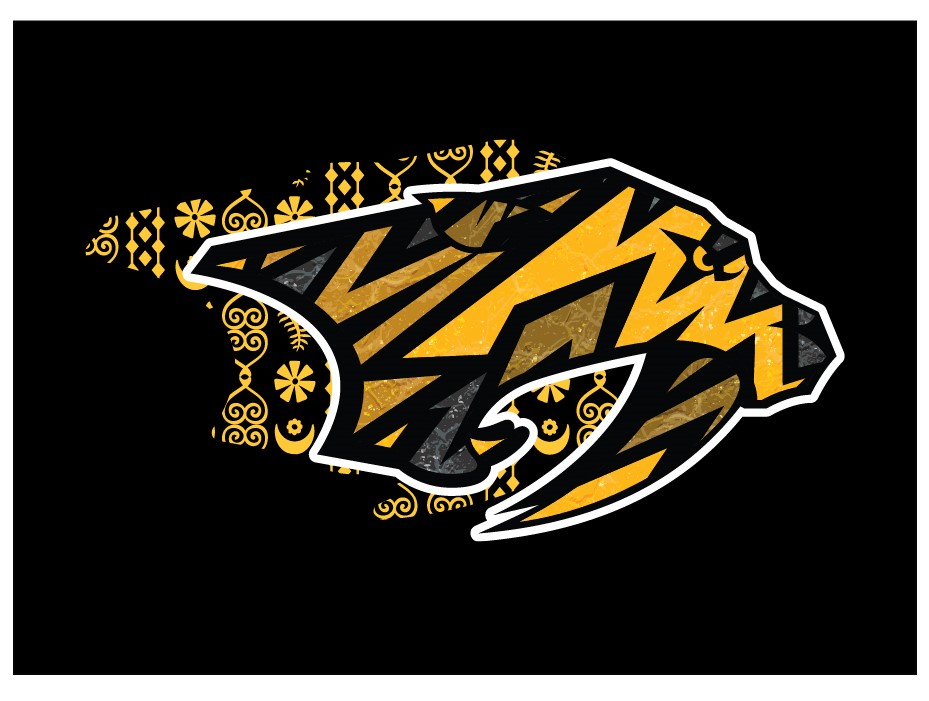
“To be celebrated professionally in such a public way means something to me. It speaks to the growth that we’ve had, and it honors what Black History Month celebration should really be about.”
This is the second consecutive year the Predators have chosen a TSU professor to design cultural jerseys and T-shirts for hockey players and fans, honoring Black History Month (BHM). The jerseys and T-shirts, designed by Sales and co-created with Predators graphic designer Tayshaun Hassell, were worn by players upon their arrival at the arena prior to game time. These items will be signed and auctioned off through the Nashville Predators’ Foundation at a later date.
Amy Bratten, the Director of Diversity, Equity, and Inclusion for the Nashville Predators, said the organization anticipated showcasing the artistry in honor of the historical celebration.
“It is such a gift to have Kaleena Sales contribute to our Black History Celebration,” Bratten said.
“What Kaleena Sales and Preds Graphic Designer, Tayshaun Hassell, created is educational and dynamic. Our players and staff were excited to showcase the artwork on January 31. We’re excited to have the logo displayed all over Smashville!”
The black and gold jerseys and T-shirts, according to Sales, feature custom lively West African patterns symbolizing purity, wisdom, love, harmony, and more. The unique design was also showcased on lanyards distributed to the first 5,000 fans in attendance.
“The symbols were designed by the Akan people from Côte d’Ivoire and Ghana during the early 1800s and have a rich and beautiful history,” explained Sales.
“The geometric pattern used alongside the Adinkra symbols is meant to represent the vibrancy of contemporary Black culture.”
Sales noted that the designs aim to honor the past by connecting it to the present. With over 20 years of experience as a graphic designer, Sales expressed the significance of this opportunity, emphasizing its importance not only for herself but also for the community she represents.
“This exposure is expected to bring increased visibility to TSU and the surrounding HBCUs.”
The Predator’s annual Black History celebration night recognized all four of Nashville’s HBCUs, featuring a battle of the bands with three local high schools, and included the National Anthem and in-game performances by Africa-American musical artists.
In 2023, the Nashville Predators selected Eric Jackson, TSU assistant professor of graphic design, to create the players jersey designs worn during the Black History Celebration game day warm-ups. Jackson expressed his appreciation for the continuous partnership between the organization and TSU, highlighting the ongoing acknowledgment of Black creatives.
“We are service providers, and we are mostly behind the scenes, so it’s great to be acknowledged,” Jackson said.
As a hockey fan, Jackson is especially excited about this year’s annual celebration, coinciding with TSU being the first HBCU to offer men’s ice hockey at the collegiate level. TSU hockey is set to commence its inaugural season this fall.
Dr. Samantha Morgan Curtis, dean of TSU’s College of Liberal Arts, said the selection of two of her professors speaks to the quality of the University’s art programs.
“We are grateful that the Predators recognize the brilliance of our faculty,” added Morgan-Curtis.
“The College of Liberal Arts is excited about the Predators partnership and all the possibilities it affords our students and faculty. This project specifically highlights the quality of our graphic design program. We are thankful to the hockey team for this opportunity.”
Morgan Curtis also shared that TSU will be the first HBCU to host the upcoming State of Black Design Conference in March, another testament to the program and faculty.
To learn more about the Predators Black History celebration and to purchase Professor’s Sales custom design T-shirt, click here.

